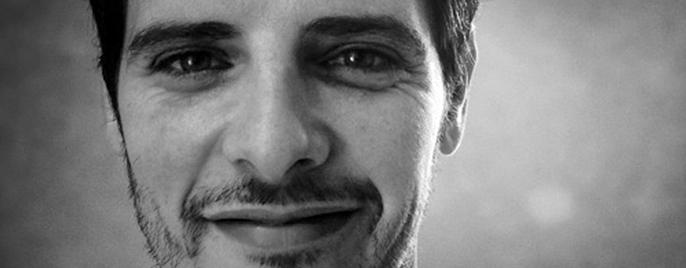Shut Up Little Man! started with the cassette recordings of Peter Haskett and Raymond Huffman arguments. How did you structure the pictures around the audio core of the documentary?
Matthew Bate (director) wanted to use the raw audio from which this phenomenon grew, but didn’t want to bore an audience so we ended up adopting a number of different visual techniques. Matt’s films have a distinctive pop aesthetic, which was fun to play with. There is a combination of dramatic recreations, a simple oscilloscope representation of the audio, shots of the recording devices used to capture the audio, shots of the San Francisco neighborhood where the arguments took place plus archival footage. Depending on what piece of audio we were running and where that came in the structure of the film depended on what visual material we used to accompany the audio.
You shot the documentary as well as cut it, what advantages did that bring to the edit?
I’ve worked as a DP and Editor on many projects, this can be difficult, but mostly it’s a great advantage especially in documentary. Shooting a film entails much discussion around thematics, visual style and structure, so by the time you hit the edit suite you not only know the footage intimately but you continue to develop the structure and storytelling. In the best cases this deepens the themes and ideas discussed and discovered during the shoot. However I find it very important to get trustworthy other eyes across the project from time to time, and producer Sophie Hyde provided an invaluable resource in this production.
During the edit you worked in tandem with the motion graphic artist and the composer how did this inform and expand the edit?
Motion graphics have been a strong element in Matt Bate’s films for years and play a crucial role in the story telling of this film. In setting up the edit we moved Raynor Pettge’s motion graphics rig into a room next to the main suite. At the beginning of every day we would have a meeting, create a list of graphics to be done and whilst Matt and I continued cutting, Raynor would create draft graphic sequences, which would typically render out overnight. So the following day we would cut in yesterday’s motion graphics, assess them together and create a new list for Raynor.
Shut Up Little Man! (SULM) is a layered film with loads of elements, motion graphics, archival footage, observational documentary sequences, straight interviews and stills, so inevitably music plays an important role bringing this all together. Composer Johnny Elk Walsh was another key collaborator in the creation of this film. We would kick John early edits of scenes, he in turn would draft sketches and bring them in, we would lay them in and give feedback. This was a fantastic way to work as the music could inform the edit and likewise as we refined scenes and the structure that ultimately helped the music take shape. I like working in this organic fashion as it allows the work of all the people involved to influence and shape the film.
With the documentary being accepted into Sundance, the 16-week post schedule was squeezed to 12, did this help or hinder the edit process?
I was concurrently editing SLUM and Life in Movement spending 4 weeks cutting one and then 4 weeks on the other. Sundance called accepting SLUM into competition, amazing, but they needed delivery 4 weeks earlier than we had scheduled. We proceeded to work 12-14 hour days 7 days a week through Christmas and new years until we crawled across the finish line buckled and in need of some serious rest. Did the film suffer for this imposed deadline? Well I am yet to finish editing a film and not feel I would like more time, so I am going to say no. There was some magic in that crazy dash and I think the film came out a little rougher around the edges than maybe we all would have liked, but it kind of suits the subject matter.
What was your favourite experience on the film?
Taking the film to Sundance was a blast, a hectic ten-day festival with 5 public screenings and 2 press and industry screenings. Meeting other feature documentary makers was great. Generally the film was received well and people couldn’t believe we only cut for 12 weeks! Recently winning an AACTA award for editing the film was certainly an unexpected amazing end to a great journey.
